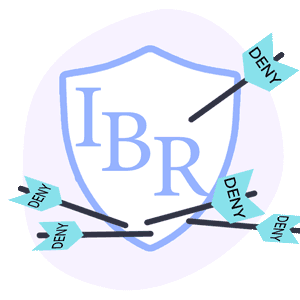CA Providers Unite! Suggestions for the DWC

On December 6, 2022, California’s Division of Workers’ Compensation (DWC) invites stakeholders to a public meeting to share “ideas to improve the State’s workers’ compensation system.”
This is an opportunity for providers to speak with one voice. Below, we address specific problems that ultimately prevent injured workers from accessing care, including:
- The chaotic MPN system, which prevents doctors from knowing whether they are eligible to treat injured workers
- Lack of oversight of the authorization/Utilization Review (UR) system
- Independent Bill Review (IBR) that fails to protect doctors who provide authorized care
These problems make workers’ comp financially unsustainable for providers, and harm both employers and their injured employees. Read on for common-sense, feasible solutions that can make workers’ comp work better for all stakeholders.
Reform the MPN System
1. Centralized MPN Information Management
The California Medical Provider Network (MPN) system is in abject chaos.
While California law makes doctors financially liable for determining whether an MPN applies to each injured worker (and whether the doctor is a member), California fails to provide doctors with the resources to make that determination:
- The bloated DWC MPN List comprises 2,278 insurer or self-insured employer MPNs, of which only 193 (8.5%) are currently approved. The DWC list does not provide termination/withdrawal/suspension dates for the 92% of MPNs that are not active.
- To determine the applicable MPN for an injured worker, a physician must obtain details of the injured worker’s employer’s workers’ compensation coverage
- Insurers maintain multiple MPNs (e.g. ACE American Insurance maintains 77 MPNs, of which only 9 are active) making it necessary to contact the injured worker’s claim adjuster to determine the applicable MPN, if any (and often, the adjuster doesn't know).
- MPN provider rosters change constantly, yet MPNs are required to update their websites only 4 times annually.
In reality, California doctors treating injured workers are at the mercy of false MPN payment denials with no recourse to prove otherwise.
The DWC should create a centralized MPN database, updated in real time. Providers should be able to quickly check MPN applicability simply by entering the employer’s name (not the employer’s workers’ comp insurer’s name, which is often unknown at intake), and check the provider’s membership status by entering the NPI number and place of service.
2. End PPO/MPN Pay-to-Treat
Preferred Provider Organizations (PPOs) are demolishing workers’ comp reimbursement rates while enriching PPOs with employers’ workers’ comp premiums.
Doctors are routinely bullied into PPO discount contracts, under threat of exclusion from MPNs. These contractual discounts are then sold, leased, and otherwise transferred to various payers. It is a PPO vendor scheme that siphons reimbursements from doctors without providing services to injured workers (or their employers).
According to daisyBill payment data, providers on average receive about 82% of Official Medical Fee Schedule (OMFS) rates, due almost entirely to PPO discounts — despite the OMFS pegging rates at roughly 134% of Medicare rates, to account for the practice expense involved in treating injured workers.
Each time California raises the OMFS, California enriches the PPOs, not doctors. Essentially, California allows PPOs to pay providers who treat injured workers at Medicare (or even lower) rates, with the balance of the OMFS purloined by the PPOs.
This must stop, or providers will continue to flee the system.
3. Enforce MPN Regulations
Routinely, claims administrators deny payment for authorized services citing MPN non-participation, often in violation of existing regulations.
California must enforce the requirement that claims administrators pay for prospectively authorized treatment, even if the provider is later found to be ineligible due to MPN non-participation, as mandated by California Labor Code Section 4610.3 and affirmed on the DWC FAQ page.
Additionally, the DWC must put an end to “conditional” authorization, whereby claims administrators illegally reserve the right to rescind authorization if the doctor is not an MPN member.
Finally, California should require that any time payment is denied due to MPN non-participation, the ID number of an active, approved MPN must be included in the EOR. This is similar to the requirement that EORs must cite a specific PPO contract where PPO discounts are applied.
4. Make MPN Disputes Eligible for IBR
IBR was designed to resolve disputes over how much the provider is owed (in other words, fee schedule disputes), rather than if payment is owed (in other words, “threshold” issues like authorization and liability).
However, this creates space for abuse by claims administrators.
If a claims administrator falsely denies payment for MPN non-participation (and denies the provider’s Second Review appeal on the same grounds), IBR is no help. Even when the MPN doesn’t exist, or isn’t maintained by the insurer or employer, the DWC deems such disputes ineligible for IBR.
This means the provider’s only recourse is a costly, time-consuming lien. Instead, with a centralized MPN database in place, IBR could resolve simple cases of improper MPN-based denials where no MPN applies.
Reform Authorization/UR
1. Standardized UR Decision Format
To request authorization, the doctor must submit the DWC RFA form, filled out correctly. But the claims administrator may respond to the RFA however they choose — with predictable results.
Claims administrators often send pages of irrelevant information, obscuring what’s actually authorized. Some respond to a single RFA with separate UR decisions for each requested treatment, or set arbitrary deadlines by which the doctor must render the authorized treatment.
The DWC should require claims administrators to respond to the RFA form on the UR form, or some other standardized UR decision form. There should be no question as to what is authorized, and (absent fraud) no way to wriggle out of payment for authorized treatment.
2. Make Authorization (Truly) Guarantee Payment
As mentioned in item #3 above, California Labor Code Section 4610.3 mandates:
“...an employer that authorizes medical treatment shall not rescind or modify that authorization after the medical treatment has been provided based on that authorization for any reason…” [emphasis added]
Yet this principle is violated over and over again by various claims administrators — often by citing MPN non-participation, but also by questioning liability, claiming that authorization “expired” after a certain time, or simply claiming that the treatment was not authorized despite clear proof to the contrary.
This should not be a complex issue. However, the less scrupulous claims administrators rely on the fact that the workers’ comp appeals process fails to protect providers in these cases, as discussed in the next proposal.
3. Make Authorization Disputes Eligible for IBR
If a claims administrator denies payment for lack of authorization (and denies the provider’s Second Review appeal on the same grounds), despite having granted authorization, IBR does not save the provider. Even when proof of authorization is included with the provider's request for IBR, the DWC usually deems such disputes ineligible for IBR.
Again, this means the provider’s only recourse is a costly, time-consuming lien.
Instead, the DWC should instruct Maximus (the entity which conducts IBR for the DWC) to review disputes in which proof of authorization is present, and order the claims administrator to pay according to the applicable fee schedule.
Reform IBR
1. Change IBR Eligibility Rules
As discussed above, the DWC should allow both authorization and MPN disputes (where proof of authorization or the inapplicability of the MPN in question are present), to be resolved at IBR.
This is not a radical idea; the DWC and Maximus have actually allowed such disputes in the past, only to later deem identical cases ineligible. Often, the DWC claims a “threshold” issue like authorization disqualifies the dispute, regardless of whether a threshold issue actually exists. Doctors literally attach previous similar cases to their IBR requests, only to see the dispute ruled ineligible.
If Maximus can review a bill for simple adherence to the fee schedule, Maximus can take the 4 or 5 seconds necessary to see proof of authorization, or check a functioning MPN database for provider eligibility to treat.
If a case involving authorization or MPNs is more complex than the above, Maximus can always defer to the DWC, as they do currently for almost all authorization and MPN disputes. But Maximus should default to accepting these disputes, the vast majority of which are open and shut cases.
2. Enforce IBR Decisions
Even after a provider pays the $180, completes the laborious process of requesting IBR, and wins, there’s no guarantee the claims administrator will comply with Maximus’ ruling.
We’ve seen it over and over. Disputed payment owed, penalties, interest payments, and restorations of the $180 IBR filing fee simply don’t make it to the doctor — despite the DWC’s and/or Maximus’ orders.
3. Punish “IBR Chicken”
Often, it seems as though claims administrators knowingly deny or adjust payments for blatantly invalid reasons, betting the doctor won’t appeal. That’s because in California, disputes default to the payer’s advantage, i.e. if the provider fails to invest the time, money, and effort into appeals, the claims administrator keeps the provider’s reimbursement.
It’s a game of chicken — the claims administrator pulls a deeply cynical move, like denying the initial bill by falsely asserting lack of authorization, and denying the Second Review appeal as a duplicate bill submission. If the doctor fails to file for IBR, the claims administrator wins.
Bogus denials and incorrect reimbursements force providers to either capitulate, or commit huge administrative resources to receive correct payment.
To deter this, the DWC should impose stiffer penalties for blatantly invalid denials that waste the state’s time and resources, including:
- Denials for lack of authorization, where proof of authorization is present
- Denials for lack of documentation when verifiable proof of documentation is available
- Denials for MPN non-participation, where no MPN applies
- Denials of Medical-Legal bills for MPN non-participation
- Application of PPO discounts to Medical-Legal bills
- Denials of Second Review appeals where the appeal is falsely labeled a “duplicate bill”
4. Disallow Denial Reasoning Switches
Somehow, the DWC allows the claims administrator to change its denial or adjustment reasoning after the provider escalates the dispute.
For Second Review appeals, the payer can assert a different denial reason than initially cited in the original EOR. When the provider requests IBR, the DWC allows the payer to change its denial or adjustment reasoning again.
C’mon, now.
Claims administrators should not be allowed to change the denial or adjustment reasoning reflected in the original EOR as a dispute moves through different stages of appeal.
The above recommendations will not make California workers’ comp work perfectly. However, they would make the system more financially sustainable for providers, a better investment for employers, and a vastly more effective way to restore the health of injured workers.
We encourage providers to attend the DWC meeting and make their voices heard. Details are as follows:
December 6, 2022
10:00 AM Pacific
Elihu Harris State Office Building (Auditorium)
1515 Clay Street, Oakland, CA 94612
Protect your practice. Harness the power of daisyBill software, data, and expertise for faster, better workers’ comp billing. Reach out to learn how we can help.
CONTACT US
DaisyBill provides content as an insightful service to its readers and clients. It does not offer legal advice and cannot guarantee the accuracy or suitability of its content for a particular purpose.





.gif)
